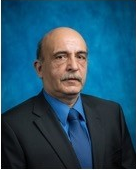题 目Ⅰ:How to prepare your manuscript for Aerospace Science and Technology (AESCTE) and other Elsevier Journals in order to achieve a quick and successful review
时 间:2018年5月17日(周四)9:00-10:30
报告人:John Ekaterinaris 教授 美国安柏瑞德航空航天大学/AESCTE杂志主编
地 点:玉泉校区教5-333室

报告摘要:
Aerospace Science and Technology (AESCTE) is a high quality Elsevier journal rating among the first in the field of Aerospace Engineering. In the last few years, the quality of the published articles, the impact factor of AESCTE, and as a result both the number of submissions and the number of rejections have been increased. The goal of this presentation is to provide background information on academic publishing in AESCTE. It outlines the various important steps that, as an Author, you need to follow in preparing your manuscript so that it becomes appealing to editors and reviewers, for going fast through the review process, and finally achieving a successful publication in AESCTE. It also aims to provide advice about how to properly structure your article in order to avoid as possible editorial comments that potentially delay or put serious obstacles to the publication of your work. From the title and keywords, right through to the conclusion and references, all the essential criteria are covered to make sure it can be a success. It goes without saying that the most important aspects for successful publication, which will make your work to distinguish among others and will accelerate the review and acceptance, are the innovative ideas it contains and the scientific value of your work. These elements will also lead to larger number of citations that will eventually befit you in the academic environment and in turn the AESCTE journal because they will contribute to further increase of the impact factor.
题 目Ⅱ:Improved Shock capturing with high-order discontinuous Galerkin discretizations using adaptive mesh refinement and sub-cell discontinuity resolution
时 间:2018年5月17日(周四)10:30-12:00
报告人:John Ekaterinaris 教授 美国安柏瑞德航空航天大学/AESCTE杂志主编
地 点:玉泉校区教5-333室
报告摘要:
Discontinuous Galerkin (DG) discretizations possess features making them attractive for high-resolution computations in three-dimensional flows that include strong discontinuities and embedded complex flow features. Key elements, which could make the DG method more suitable for computations of such time-dependent flows in complex domains, is use of adaptive mesh refinement (AMR) and application of limiting procedures that ensure sharp and accurate capturing of discontinuities for unstructured mixed-type meshes. A unified limiting approach suitable for increased order of expansion and adaptive mesh refinement is introduced in the context of it h/p-adaptivity in order to locally enhance resolution for three-dimensional flow simulations that include discontinuities and embedded complex flow features. Furthermore, a nonlinear filter is employed in the finite element context of discontinuous DG discretizations to achieve low dissipative, well-balanced, high-order discontinuity capturing. It is shown that for higher order discretizations discontinuity resolution within the cell is achieved and the design order of accuracy is preserved. The filter is applied for a number of standard inviscid flow test problems including strong shocks interactions to demonstrate that the proposed dissipative mechanism for DG discretizations yields superior results compared to the results obtained with the TVB limiter and higher-order hierarchical limiting. The proposed approach is suitable for p�Cadaptivity in order to locally enhance resolution of three-dimensional flow simulations that
报告人简介:
Dr. John A. Ekaterinaris received his B.S. in Electrical and Mechanical Engineering from the Aristotle University of Thessaloniki in Greece in Oct. 1977. Started graduate studies in the US in 1981 and revived his M.Sc. in Mechanical Engineering in 1982 and his Ph.D. from the School of Aerospace Engineering in 1987, both at the Georgia Institute of Technology, Atlanta GA.
Between 1987 �C 1995, worked at NASA�CAmes Research Center at Moffett Field CA, and at the same time he was faculty at the Naval Postgraduate Scholl at Monterey CA. He took a Senior Research Scientist position at RISOE National Laboratory in Denmark between 1995 �C 1997 where he worked on wind energy, he returned to CA and worked at Nielsen Engineering and Research (NEAR) between 1997 �C 2000.
In Oct. 2000 he took the Research Director position at FORTH/IACM, where he remained until 2005. In Sept. 2005 he joined the faculty of Mechanical and Aerospace Engineering at the University of Patras. He joined the faculty of Embry-Riddle Aeronautical University in August 2012 where he is currently teaching and performing research.
His interests are computational mechanics (including aerodynamics, magnetogasdynamics, electromagnetics, aeroacoustics, flow transition, turbulence research, and flow structure interaction), high order methods for PDEs, multiscale phenomena, stochastic PDE’s, and biomechanics and more recently machine learning and uncertainty quantifcation. He is author of over 60 journal papers. He has been member American Institute of Aeronautics and Astronautics (AIAA), where he served as member at the Flight Mechanics and Fluid Dynamics Technical Committees, and AIAA associate fellow of since 1985.
He performed funded research in the US and in Europe with the European Space Agency (ESA), and through the EU framework programs. He also performed funded research thought the offices of AFOSR and ARO. He is associate editor of the Journal Progress in Aerospace Science (JPAS) and editor in chief of the Journal Aerospace Science and Technology (AESCTE).


